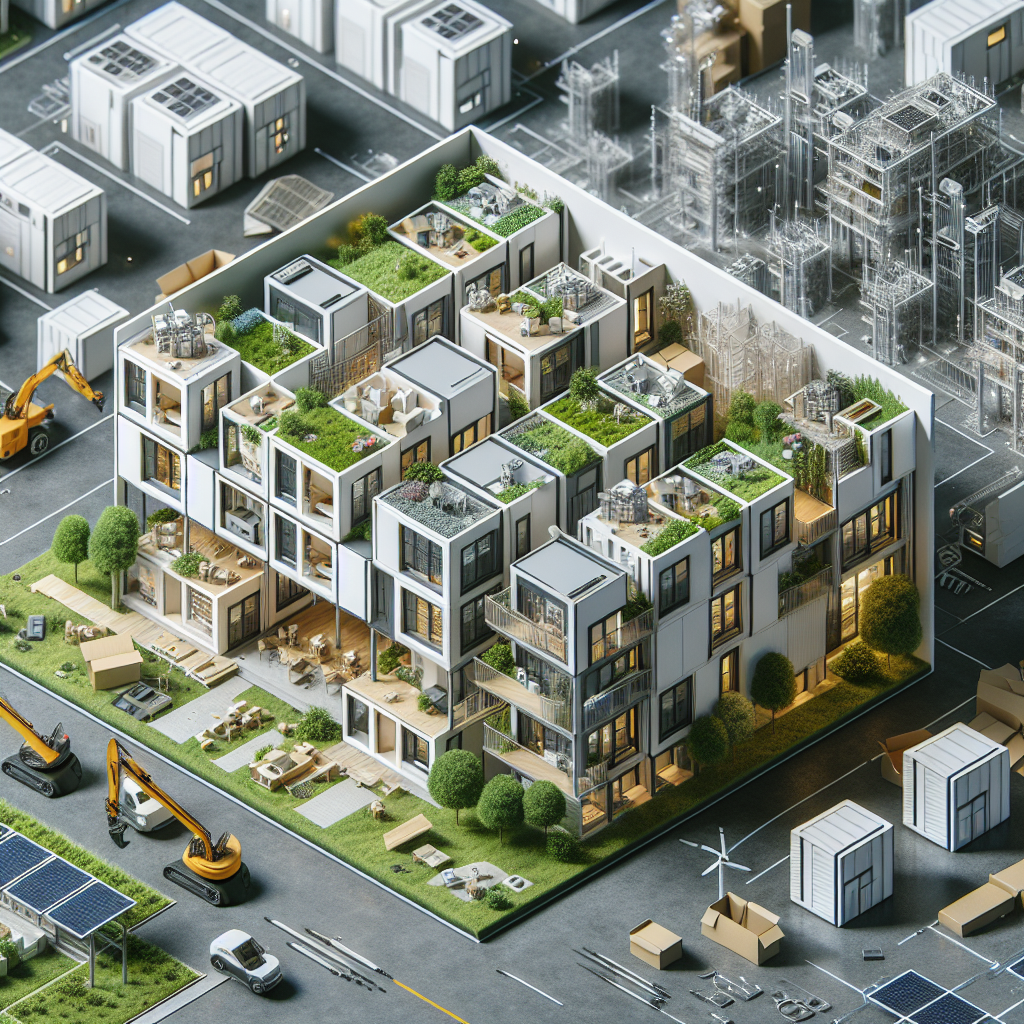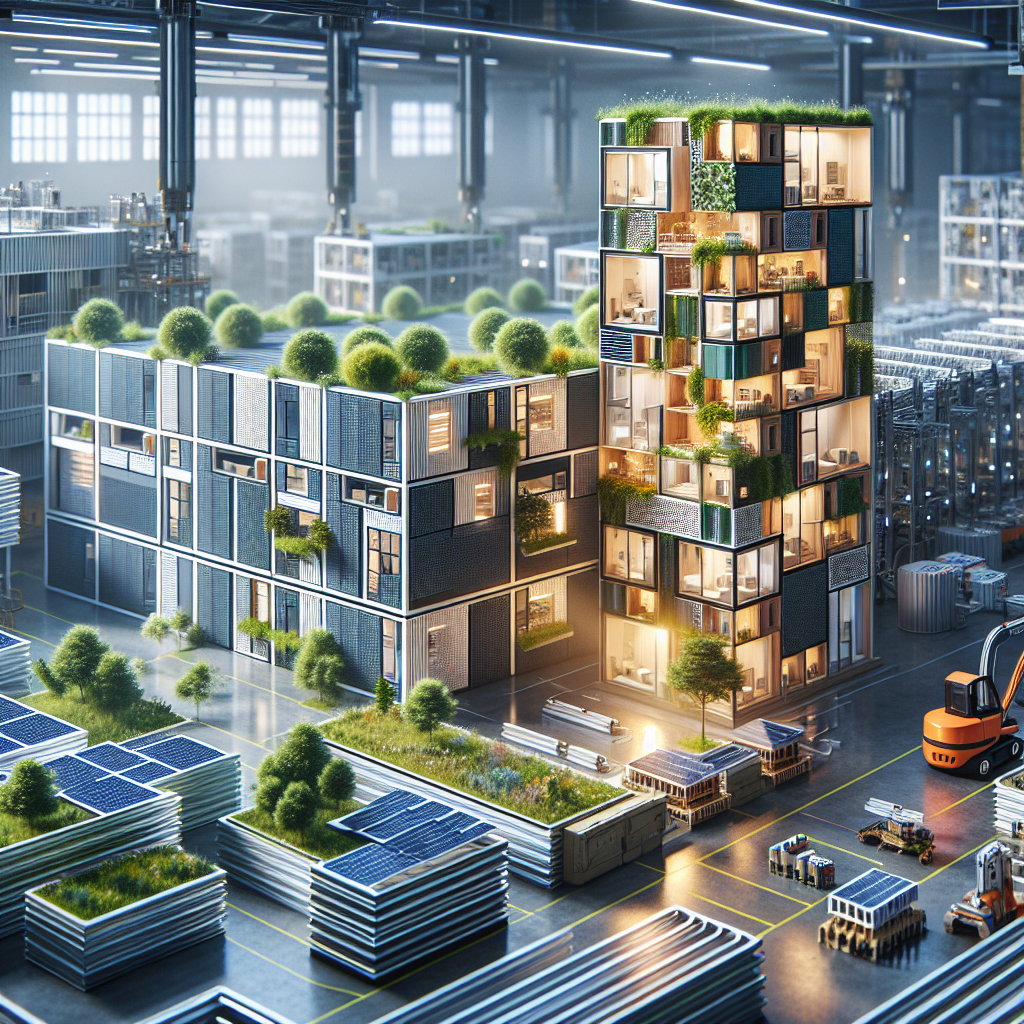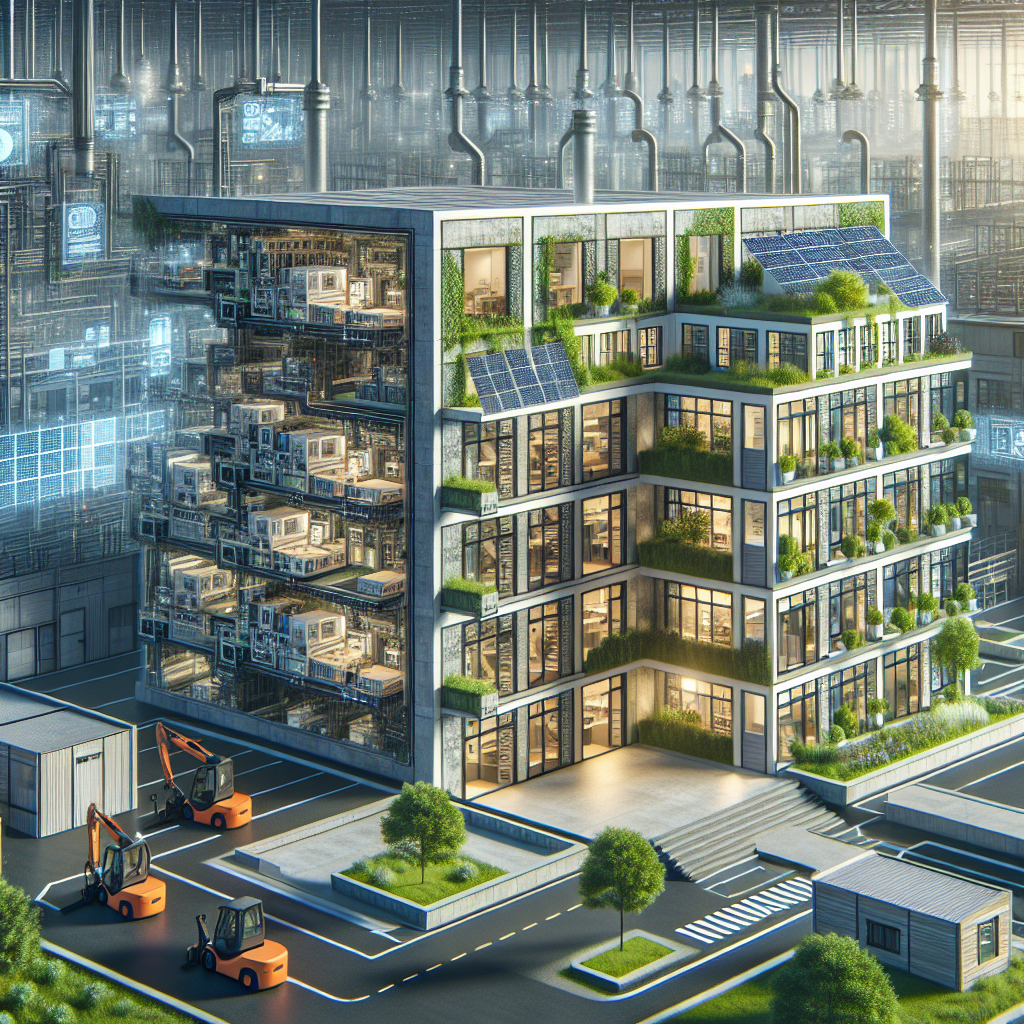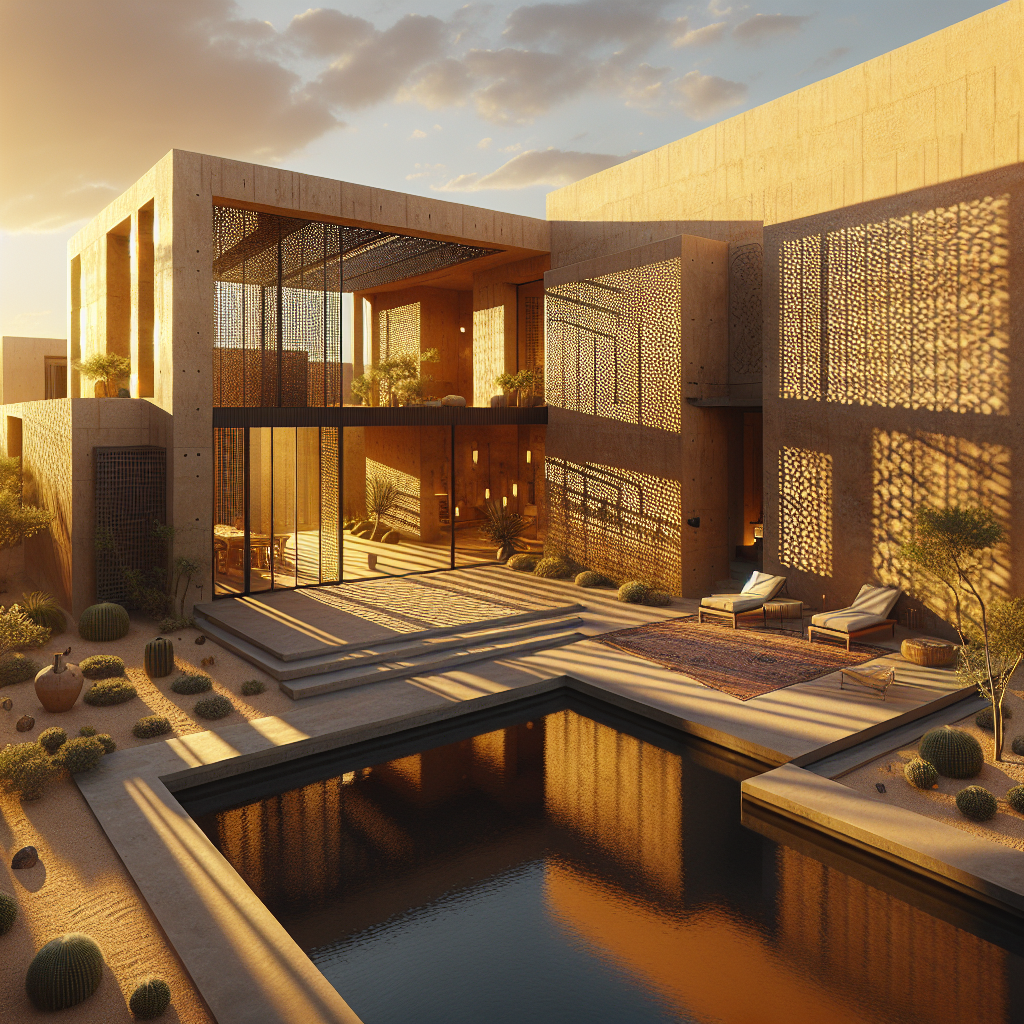Modular Construction: Redefining the Future of Building

Modular Construction: The Vanguard of Building Innovation
The architectural landscape is undergoing a profound transformation, one that is being spearheaded by the burgeoning trend of modular construction. This method, which involves the off-site production of standardized building sections, is swiftly redefining the future of building. As the world grapples with pressing issues such as housing shortages, environmental sustainability, and the need for cost-effective construction, modular construction emerges as a beacon of hope, promising efficiency, quality, and adaptability.
With its roots in the post-war era, modular construction has evolved from simplistic prefabricated units to sophisticated, design-forward structures. Today, it stands at the forefront of the construction industry, championing a revolution that is not only redefining aesthetics but also reshaping the way we approach the building process.
The Allure of Modular Design
Modular construction’s allure lies in its inherent flexibility and efficiency. The production of modules in a controlled factory setting ensures precision and consistency, drastically reducing on-site construction time. This method also minimizes environmental impact, as it leads to less waste and disturbance to the site. Furthermore, the ability to scale projects up or down with ease makes modular construction particularly attractive for developers and investors.
One of the most compelling aspects of modular design is its versatility. From chic urban apartments to sprawling educational campuses, modular buildings are proving that they can hold their own in terms of style and functionality. This versatility is not only a testament to the ingenuity of modern architects but also to the advanced technologies that make such innovation possible.
Technological Advancements in Modular Building
Technological advancements are the linchpin of modular construction’s success. Cutting-edge software for design and engineering allows for meticulous planning and customization, ensuring that each module meets exact specifications. Moreover, the integration of smart home technology and sustainable materials within these prefabricated units is setting new standards for living and working spaces.
It’s no surprise that modular construction is gaining traction across the globe. Renowned for its ability to deliver projects swiftly without compromising on quality, this method is particularly beneficial in regions that require rapid infrastructure development. The recent surge in modular hotels and office buildings underscores the industry’s readiness to embrace a more dynamic and sustainable approach to construction.
Case Studies: Modular Marvels
Across the globe, there are shining examples of modular construction that encapsulate its potential. Take, for instance, the Nakagin Capsule Tower in Tokyo, a mixed-use residential and office tower that has become an architectural icon. Despite its construction in the 1970s, it remains a testament to the timeless appeal and innovation of modular design.
On the residential front, projects like New York’s Carmel Place have demonstrated that modular construction can be the answer to urban housing challenges. This development, which features micro-apartments built off-site, showcases how modular techniques can be employed to create high-density, affordable housing without sacrificing aesthetics or comfort.
Education has also embraced modular solutions, with institutions like the Colorado School of Mines leveraging prefabricated units to expand their facilities. This approach not only accelerates construction timelines but also offers the flexibility to adapt to the evolving needs of the academic community.
The Economic and Environmental Edge
Modular construction is not just about speed and style; it’s also about sustainability and economics. By reducing the need for on-site labor and materials, this method can significantly lower construction costs. Additionally, the ability to recycle and reuse modules aligns with the principles of circular economy, presenting a compelling case for environmentally conscious construction.
The environmental benefits of modular construction are further enhanced by the sector’s commitment to green building practices. From the use of renewable energy sources to the integration of energy-efficient systems, modular buildings are often at the vanguard of eco-friendly design.
Financially, the predictability of modular construction costs is a boon for budget-conscious clients. With most of the production occurring in a factory setting, unforeseen expenses commonly associated with traditional construction methods are significantly reduced. This economic predictability, coupled with the environmental benefits, makes modular construction a formidable force in the quest for sustainable development.
Challenges and Opportunities
Despite its many advantages, modular construction is not without its challenges. Transportation logistics and the need for crane access at construction sites can pose limitations. Moreover, the perception of modular buildings as inferior or temporary structures still lingers in some quarters, although this is rapidly changing as more high-profile projects come to fruition.
Yet, these challenges also present opportunities for innovation. As the industry continues to refine its techniques and challenge misconceptions, modular construction is poised to become an even more integral part of the architectural landscape. The potential for collaboration with traditional construction methods also offers exciting prospects for hybrid models that could further enhance the efficiency and aesthetics of building projects.
As we look to the future, it is clear that modular construction holds the keys to a more agile, sustainable, and cost-effective building industry. With each modular marvel that graces our skylines, we are reminded of the boundless potential that lies within this approach to construction. As the world continues to urbanize at an unprecedented rate, modular construction stands ready to meet the challenges of the 21st century, offering a blueprint for the future of building that is as innovative as it is inspiring.
For further insights into the world of design and architecture, explore the Mainifesto archives, where discussions on topics such as sustainable architecture and smart home technology delve into the intricacies of modern construction trends.








